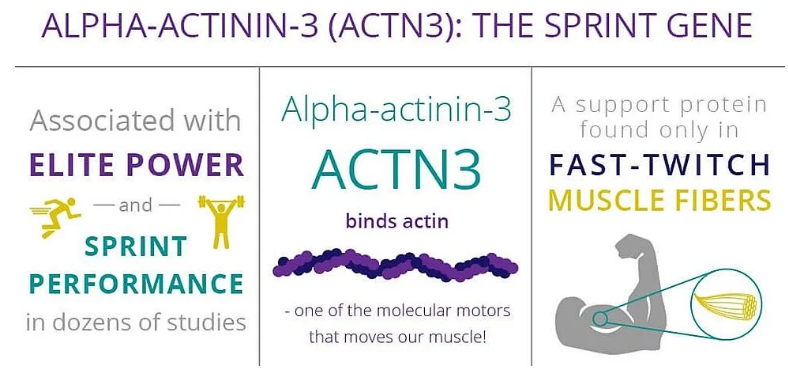When we talk of workout, one size fits all standard solution is not something we endorse. Every individual is unique & responds to workout differently. A specific weight training schedule would have a different impact on each individual. Some people fatigue earlier than others (folks having more of a fast twitch muscle fibre in their total muscle composition). There can be a lot of reasons that are attributed to the different & distinctive impact of a particular workout schedule on muscle fibre of different individuals. Among these, genetics is one of the main reasons- specifically the ACTN3 gene.
Before we dive into how genetics impact our muscle composition, let us discuss in detail how muscle works.
Our muscle is a collection of specialised cells. In muscles, these cells combine to form large structures called muscle fibres. Add up multiple muscle fibres & you get muscles. This structure is akin to long steel cables of suspension bridges. Contraction of muscles are made possible by proteins actin & myosin. Both Myosin & Actin are long filamentous proteins that are stacked on top of each other in an overlapping pattern. Actin is attached to the end of muscle fibre. During muscle contraction, myosin grabs onto actin & pulls it along which essentially means myosin is indirectly pulling the end of muscle fibre & causing muscle to move. With various myosin molecules pulling various actin molecules, muscle fibres begin to contract. Once myosin releases its grip on actin, muscle comes back to its original position.
So the question arises how this entire process can be different between people? Response to this question is gene- ACTN3 which plays a role in this actin-myosin contraction cycle & defines what type of muscle fibre is made.. You can read our previous blog to know more about muscle fibre types.
Briefly, humans have two categories of muscle types- slow twitch & fast twitch. With these categories, we have three muscle fibre types- Slow twitch (type 1), Fast twitch (type 2A & type 2B). These can further be subdivided based on the types of myosin they have, how quickly they contract & number of other properties.
Fast twitch muscle fibres are good at contracting quickly while slow twitch muscle fibres contract slowly. Fast twitch muscle fibres produce a lot of power in a short span of time while slow twitch can sustain for a longer period of time. To do this, they require a large amount of oxygen & mitochondria. You can find more details about oxygen uptake here.
Most muscles contain a mix of different fibre types & relevant proportion of muscle fibre determines how quickly it will burn out. This ratio is determined by genetics & genes that can influence these proportions would have the ability to affect your muscle fatigue.
ACTN3 codes for a protein that interacts directly with actin called alpha-actinin-3. The ACTN3 protein binds to actin & helps give stability to muscle contraction. ACTN3 is produced only in fast twitch muscles & helps them give their identity. A specific variant of DNA coding in ACTN3 disrupts the production of protein by preventing the cells from reading the genes. This change in DNA makes those fast twitch muscle fibre look like slow twitch, changing the ratio of fast twitch to slow twitch muscle fibre. This essentially means that people with this specific variant will not do well with sprint or power based workout. This also means that people who indulge in sprint or power based workout are more likely to produce ACTN3 (not this variant) & would have more of fast twitch muscle fibres.
The variant in DNA coding (R variant) of ACTN3 that codes for alpha-actinin-3 as normal provides advantage with sprint, strength & power based sports that require explosive muscle contractions. In other words, people with R variant have greater muscle mass, great baseline strength, great strength gains in response to training & higher proportion of fast twitch muscle compared with X variant individuals. ACTN3 also helps in muscle recovery workout however it is important to mention here that lack of alpha-actinin-3 (X variant) leads to greater exercise induced muscle damage. As a result X variant individuals require longer recovery times between workouts.
So the question arises do X variant individuals benefit in some way? This genotype has advantages in endurance based training such as long distance running, jogging & rowing.
However, always remember that genes are only a part of the entire picture. Your environment such as training, diet, & lifestyle also play an important role in exercise performance.
Does your athletic performance benefit from production of alpha-actinin-3 or your ACTN3 genotype is more inclined towards endurance based activity? Sign up for our genomics powered fitness coaching solution & discover your personal traits: https://thesushantkumar.com/online-fitness-coaching/


Leave a Reply